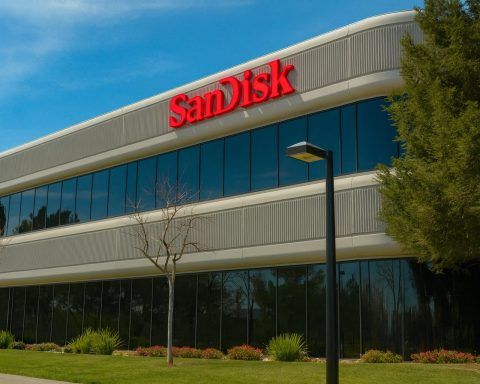Palantir Technologies (NYSE: PLTR) is back in the spotlight today, with its share price rebounding in after‑hours trading even as fresh research and commentary highlight an increasingly sharp divide between bullish AI optimism and mounting valuation concerns.
Palantir stock price on November 20, 2025
As of this evening, November 20, 2025:
- Regular session close: Around $165.42 per share
- After‑hours price (8:00 p.m. ET): About $172.09, up roughly 4% from the close [1]
- Market capitalization: ~$394 billion [2]
- 52‑week range: Approximately $59.96 – $207.52 [3]
Even after a sharp pullback from its early‑November peak near $207, shares remain up well over 150% in the last 12 months, making Palantir one of the standout AI winners of 2025. [4]
Options markets are still pricing in big moves: one options tracker puts implied volatility near 58% for PLTR contracts expiring today, underscoring how traders see Palantir as a high‑beta AI vehicle rather than a sleepy software name. [5]
Today’s headlines: trillion‑dollar dreams vs “too hot” valuation
News flow on November 20 clusters around one question: is Palantir an eventual trillion‑dollar AI platform, or already priced beyond perfection?
1. Trillion‑dollar club speculation
A widely shared CoinCentral analysis published today frames Palantir as a potential future member of the “trillion‑dollar club.” The article notes: [6]
- Palantir’s market cap is about $394 billion.
- To reach $1 trillion, the stock would need to rally another ~145% from current levels.
- Q3 revenue jumped 63% year over year to $1.18 billion, while adjusted operating income hit about $600 million, implying a 51% margin. [7]
The piece also highlights a dramatic re‑rating in the last couple of years: Palantir’s valuation has swelled roughly 2,000% since the release of ChatGPT, as investors have repositioned it from niche data contractor to core AI infrastructure play. [8]
A separate article—syndicated via AOL/Yahoo Finance from The Motley Fool—asks a similar question: Could Palantir be the next AI stock to hit a trillion‑dollar valuation? It emphasizes the company’s transformation into one of the world’s most valuable pure‑play AI software firms, thanks to surging demand for its platforms such as Foundry, Gotham and AIP (Artificial Intelligence Platform). [9]
2. Insider Monkey: AI momentum “impressive,” but valuation “too hot”
Balancing the bullish narratives, Insider Monkey published a note early this morning titled “Palantir’s (PLTR) AI Momentum Impresses, but Valuation Still ‘Too Hot’.” [10]
Key points from that piece:
- Research firm Freedom Capital recently raised its price target from $125 to $170, but maintained a “Sell” rating. [11]
- The firm cites Q3 upside driven by record U.S. commercial growth and AIP adoption, but points out that European operations are largely flat. [12]
- It warns that Palantir’s valuation already assumes “embedded hypergrowth,” while risks loom from:
- Possible defense‑budget pressure
- Rising AI‑talent hiring costs
- A potential slowdown in U.S. commercial growth after a record year [13]
In short: even some AI bulls are balking at how much future success appears baked into today’s share price.
3. Trefis: stock down 20% from highs – opportunity or trap?
Another fresh article today from Trefis zeroes in on the recent sell‑off, noting that PLTR has fallen about 20.2% in under a month, sliding from $207.18 on November 3 to roughly $165 now. [14]
Trefis’ historical analysis finds:
- In prior “sharp dip” events (30%+ drop in under 30 days), the median 12‑month return after the dip was about ‑7.4%,
- But the median peak gain within those 12 months was a hefty +41%, with a median of 144 days to that peak. [15]
On fundamentals, Trefis says Palantir “passes basic quality checks,” citing metrics like: [16]
- Revenue growth (LTM): ~47%
- Three‑year average revenue growth: ~29%
- Operating cash‑flow margin: ~47%
The implication: Palantir is a high‑quality, high‑volatility name where buying dips has sometimes worked—but not always.
Q3 2025: “Otherworldly” growth and record AI momentum
Today’s debate only makes sense against the backdrop of Palantir’s blockbuster Q3 2025 results, released on November 3.
According to the company’s filings and investor materials: [17]
- Total revenue:$1.18 billion, up 63% year over year and about 18% sequentially.
- U.S. revenue:$883 million, up 77% year over year.
- U.S. commercial:$397 million, up 121%.
- Government: around $486 million, up 52%. [18]
- Adjusted operating income: about $600–601 million, a 51% margin.
- Adjusted EPS:$0.21, versus $0.10 a year ago and above analyst estimates. [19]
- Free cash flow: about $540 million, a mid‑40s percent margin. [20]
- Rule of 40 score: roughly 114, an extremely high combination of growth and profitability for a software company. [21]
The quarter also delivered:
- Total contract value (TCV): around $2.8 billion, up roughly 151% year over year.
- 204 deals worth at least $1 million, including 91 deals above $5 million and 53 above $10 million.
- Customer count climbed to around 911, with net dollar retention near 134%, meaning existing clients are increasing their spend significantly. [22]
CEO Alex Karp has described this growth as “otherworldly,” pointing especially to the AIP (Artificial Intelligence Platform) as a key driver of U.S. commercial demand. [23]
Guidance and the AI pipeline
Looking ahead, Palantir guided for: [24]
- Q4 2025 revenue: about $1.327 – $1.331 billion, implying ~61% year‑over‑year growth, ahead of prior Street estimates near $1.19 billion.
- Full‑year 2025 revenue:$4.396 – $4.40 billion.
- Full‑year adjusted operating income: in the $2.15 billion area.
That guidance, while slightly slower growth than Q3’s 63%, still represents an extraordinary expansion rate for a company already approaching $4.5 billion in annual revenue.
On the demand side, Reuters recently highlighted that Palantir’s AI tools for the military remain in high demand, aided by a U.S. Army directive to use its “Vantage” platform and a partnership with Nvidia to enhance AI capabilities. [25]
Separately, the U.S. Treasury Department disclosed a September 2025 contract with Palantir to build a unified API layer for IRS data—part of a broader IT modernization initiative, which should deepen Palantir’s integration into core government infrastructure. [26]
And today’s Benzinga/inkl piece on Surf Air Mobility shows how Palantir is also embedding itself into niche commercial verticals: Surf Air is using Foundry and AIP as the backbone of “SurfOS,” an operating system for regional and future electric aviation, designed to optimize flight schedules and fleet utilization. [27]
Together, these deals reinforce the narrative of Palantir as a horizontal AI platform (used across industries) with deep vertical implementations (defense, aviation, finance, healthcare and more).
Analyst ratings and institutional flows: “Hold” territory
Despite the runaway growth, Wall Street is far from universally bullish.
Street consensus: strong business, stretched valuation
A fresh MarketBeat summary today shows: [28]
- 24 analysts covering PLTR.
- Consensus rating:“Hold.”
- Roughly 2 “Sell”, 17 “Hold”, 5 “Buy” ratings.
- Average price target: about $172 per share, only slightly above tonight’s after‑hours level.
Another detailed breakdown from Barchart cites 21 analysts with a similar “Hold” consensus and an average target near $193, implying only modest upside from current prices, plus a wide target range that reflects deeper uncertainty. [29]
Across these reports, the main sticking points are:
- Extremely high valuation multiples—price‑to‑sales well above 100x and forward P/E north of 200x in some estimates. [30]
- Heavy dependence on continued hypergrowth in U.S. commercial AI adoption.
- Geographic concentration, with Europe still relatively stagnant. [31]
New institutional money (and insider selling)
On the institutional side, MarketBeat also reports today that Alteri Wealth LLC opened a new Palantir position in Q2, purchasing just over 2,000 shares valued at roughly $281,000—a small stake in dollar terms but emblematic of continued advisor interest. [32]
The same filing roundup notes: [33]
- Numerous small wealth managers have recently initiated or added to PLTR positions.
- About 45–46% of the float is now held by institutions and hedge funds.
- Insiders still own around 9% of the stock but have sold roughly 180,000 shares (about $28.7 million worth) over the last 90 days.
Insider selling at these levels isn’t automatically bearish—much of management’s compensation is in stock—but it does add another data point for those worried the shares have run ahead of fundamentals.
How expensive is “too expensive”?
Much of today’s coverage circles back to a single issue: is Palantir’s valuation justified?
Across CoinCentral, Barchart and other analyst round‑ups, some common numbers keep resurfacing: [34]
- Price‑to‑sales (P/S): around 100–110x
- Forward P/E: often cited in the 230–375x range, depending on the source and forecast.
- Trailing P/E: hundreds of times current earnings.
- By comparison, even other AI leaders like Nvidia trade at far lower earnings multiples.
24/7 Wall St.’s medium‑ and long‑term forecast, published this week, underscores the tension: [35]
- It estimates a median one‑year Wall Street target near $188, roughly in line with other surveys.
- But its own 12‑month fair‑value estimate is closer to $120, implying over 30% downside from current levels.
- Looking out to 2030, it models revenue above $8 billion, net income nearing $3 billion, and a potential share price around $192—only modest upside from today’s price if those projections prove accurate.
Put differently: many analysts agree Palantir’s business is exceptional, but they’re less sure that today’s stock price leaves much margin for error.
What today’s setup could mean for Palantir investors
From a news and sentiment perspective, November 20, 2025 crystallizes Palantir’s current investment debate:
- Fundamentals are undeniably strong.
- Revenue growth above 60%, massive expansion in U.S. commercial AI, sector‑leading Rule of 40 scores, and thick operating margins all support the case that Palantir is no longer a speculative story but a profitable platform business. [36]
- Growth pipelines look robust.
- Multi‑year government contracts (Army, Treasury, other agencies) and deepening commercial partnerships (such as Surf Air’s “SurfOS” built on Foundry and AIP) suggest a long runway for both public‑sector and enterprise demand. [37]
- Valuation risk is front and center.
- Today’s commentary from Insider Monkey, Trefis, and various analyst surveys all echo the same warning: at several hundred times forward earnings and a triple‑digit price‑to‑sales multiple, Palantir is priced for near‑flawless execution. [38]
- The stock is volatile—even on good news.
- Despite a huge earnings beat and raised guidance, the stock tumbled more than 20% from its post‑earnings high, in part because expectations were so elevated and prominent investors (like Michael Burry) disclosed bearish options positions. [39]
- Consensus: a “Hold” with big upside and downside scenarios.
- Most analysts aren’t calling Palantir a clear buy or a clear short; instead, they see a high‑quality AI leader whose valuation already discounts much of the rosy scenario. [40]
Bottom line
For today, November 20, 2025, Palantir sits at the intersection of:
- Explosive AI‑driven growth,
- Deep government and enterprise entrenchment, and
- A valuation that many observers argue is “beyond gravity.”
The stock’s after‑hours bounce back above $170 suggests dip‑buyers are still active, even as a growing chorus of analysts and commentators warn that the bar for future performance has never been higher. [41]
For investors, the newsflow today doesn’t resolve the Palantir debate—but it does sharpen it: PLTR is no longer about whether the business is winning in AI; it’s about how much of that victory is already priced in.
References
1. public.com, 2. www.marketbeat.com, 3. www.marketbeat.com, 4. www.barchart.com, 5. optioncharts.io, 6. coincentral.com, 7. coincentral.com, 8. coincentral.com, 9. www.aol.com, 10. finviz.com, 11. www.insidermonkey.com, 12. www.insidermonkey.com, 13. www.insidermonkey.com, 14. www.trefis.com, 15. www.trefis.com, 16. www.trefis.com, 17. investors.palantir.com, 18. leverageshares.com, 19. leverageshares.com, 20. coincentral.com, 21. investors.palantir.com, 22. coincentral.com, 23. www.palantir.com, 24. www.reuters.com, 25. www.reuters.com, 26. home.treasury.gov, 27. www.inkl.com, 28. www.marketbeat.com, 29. www.barchart.com, 30. coincentral.com, 31. www.insidermonkey.com, 32. www.marketbeat.com, 33. www.marketbeat.com, 34. coincentral.com, 35. 247wallst.com, 36. leverageshares.com, 37. www.reuters.com, 38. www.insidermonkey.com, 39. www.barchart.com, 40. www.marketbeat.com, 41. public.com







